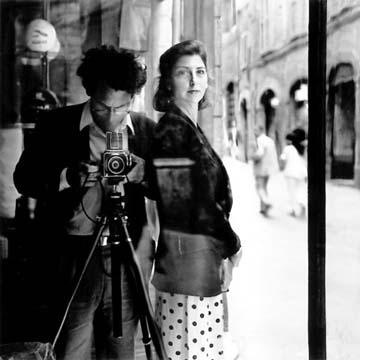Leslie Smolan on Rodney Smith
Next week, Smithsonian Associates and Anthony Wilder / Architecture will jointly present Celebrating Whimsy in Art & Architecture, The Rodney Smith Legacy, at the Smithsonian’s Ripley Center. Until his untimely passing, Rodney was known to a small coterie of magazine Directors of Photography, Museum curators and collectors. With this DC debut of his work, his wider legacy as one of the 20th Century's great photographers is being launched. The presentation of Rodney Smith’s iconic photography will be led by Leslie Smolan, Smith’s wife and creative partner.
Smithsonian Associates—the largest museum-based education program in the world—produces programming that brings the Smithsonian to life. Anthony Wilder, fittingly known for its whimsical architecture in the D.C. region, is committed to sharing the region’s cultural landscape with its clients and supporting the art community through collaborations such as this.
Rodney Smith was a prominent American photographer whose work—first in black and white, later in color—invited comparisons to that of Belgian surrealist Rene Magritte. He combined portraiture and landscapes to create enchanted worlds full of subtle contradictions and surprises. Smolan, the Executive Director of The Rodney Smith Estate, and co-founder of the Carbone Smolan Agency, shared some of her thoughts about Rodney’s life and legacy for DART readers.

I met Rodney in 1987. The timing was serendipitous. I was a 38-year-old graphic designer and business owner, ready to have a life that was about more than work. Rodney was moving in the other direction. He was a 43 year-old photographer, ready to leave his small town life and make his mark on the world. We were both looking for a change. I invited him to collaborate with me on a self-generated project “The Hat Book,” which contrasted the workers in an 18th-century hat factory with the style and whimsy of wearing hats. Our partnership was instrumental in giving Rodney the confidence to find his own voice, and embrace his past. We got married at the house [in Sneeden’s Landing, NY] in 1990, at the end of “courtship and construction”.
By the mid-90s, [Rodney’s] editorial clients included The New York Times Magazine, W Magazine, Vanity Fair, Departures and New York Magazine. He was immersed in shooting fashion for Neiman Marcus, Bergdorf Goodman, Ralph Lauren, and Paul Stuart among others, demonstrating an emerging affinity for humor and surrealism. Ironically, he had come full circle, embracing the fashion world he’d previously rejected, yet this time on his own terms. Rodney said he became a photographer “to be able to make the world clearer and sharper, to breathe in its notoriety and humor and stamp the world with wit and grace….
In addition to his photographs, he also left behind a blog called The End, where he posted his musings about photography and being human. I invite you all to read this which is hosted on his website.”



